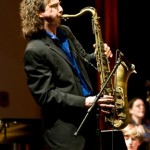
Talia Gibas
Last February, when my fellow Arts Education Council members and I agreed on “the trifecta of standards, accountability and assessment” as the topic of AFTA’s September arts education blog salon, I noticed how ominous those words sound. Sitting in the council meeting, I pictured a pitchfork stuck in the ground, with the three prongs of standards, accountability and assessment serving a dark warning to any arts educators who dare get close to it.
I happen to think that standards and assessment systems can be good things, so the fact these thoughts crossed my mind is testament to how much baggage the words carry, particularly in the arts. They are also, for better or worse, here to stay. Recognizing they are tools that can be applied well or applied poorly, how does an arts education community begin incorporating those tools into practice in a meaningful way?
Last year, in Los Angeles County, we decided to try and start a broad conversation about arts assessment. We invited the research firm WestEd, which a few years earlier had conducted a comprehensive study of the state of arts assessment across the United States, to deliver a full-day seminar on assessment strategies, open to as many people as we could comfortably cram in a large meeting room.
We also asked WestEd to deliver smaller, more hands-on workshop sessions focused on rubrics. Why rubrics? We conducted an informal poll of school districts applying to us for matching funds for artist residencies, asking in which areas of assessment they felt they needed the most support. Rubrics were by far and away the most popular answer.
This was the first time that Arts for All had ever offered broad-scale professional development on arts assessment, and the first time in a long while that we had offered professional development to arts organizations and school districts simultaneously. How did we do in helping our constituents sort through all that baggage?
Read More














